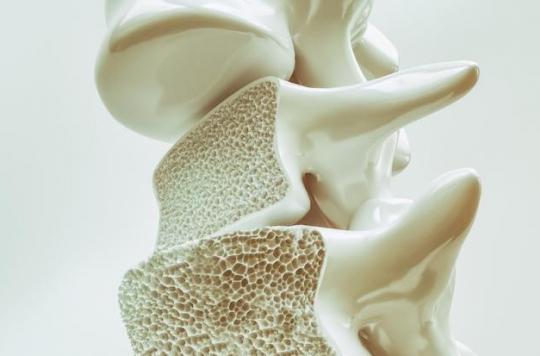A paradigm shift is what qualifies the discovery that blocking certain receptors in the brain leads to a rapid 800% increase in bone mass. Amazing brain-bone communication.

“We believe we have identified a novel pathway through which the brain regulates bone mass. This is very promising because it allows the body to shift into overdrive to build bone,” said Stephanie Correa, assistant professor at UCLA’s Brain Research Institute in Los Angeles. and co-author of the study published in the journal NatureCommunications.
Blocking a particular set of signals from a small number of neurons in the brain causes female mice (but not males) to build extremely dense bone and maintain it into old age. In addition, “super-dense bones” are also exceptionally strong.
These neurons could play an important role in controlling bone density in women, the researchers said. Research that could lead to new treatments for osteoporosis in postmenopausal women.
Suppression of estrogen receptors
The discovery was made by chance during experiments on a specific population of a few hundred estrogen-responsive brain cells that are located in a region of the hypothalamus called the “arculate nucleus”. Stephanie Correa, then a post-doctoral researcher in the UCLA studies laboratory, discovered that, in mice, the genetic deletion of the estrogen receptor in these neurons caused a slight increase in weight and less activity.
Stephanie Correa expected to observe fat accumulation or muscle mass gain, but this was not the case. To find out the origin of the excess weight, she used more sensitive laboratory techniques. To her surprise, she found that the mice had bigger bones and their bone mass increased by 800%.
Incredible intensity of the effect
The researchers hypothesized that the normal role of estrogen was to tell these neurons to move energy from bone growth to other metabolisms, but that removing estrogen receptors completely reversed this process.
Additional experiments showed that the modified mice retained their increase in bone density until the second year of life, which is considered old age: normal female mice begin to lose bone mass at the age of 20 weeks, but the modified mice retain high bone mass.
They were also able to reverse bone loss in an experimental model of osteoporosis. In female mice that had already lost more than 70% of their bone density due to an experimental decrease in estrogen in the blood, suppression of estrogen receptors in the hypothalamus caused a rebound in bone density of 50% in a few weeks.
Brain-bone communication
“I was immediately struck by the magnitude of the effect,” said Stephanie Correa. “We knew right away that this was a game-changer and heralded an exciting new direction with potential applications for improving women’s health.”
This totally different understanding of how the body controls bone growth suggests that these researchers may have discovered a completely new pathway that could be used to improve bone strength in postmenopausal and osteoporotic women.
Researchers are currently investigating how this “brain-to-bone communication” occurs in practice and whether drugs could be developed to increase bone strength in postmenopausal women without the potentially dangerous effects of estrogen replacement therapy.
Predominantly feminine effect
More than 200 million people in the world suffer from osteoporosis, many women, but also men. This disease, which can have several causes, weakens the bones and can thus fracture for moderate traumas. Forty percent of women have a fragility fracture that is linked to osteoporosis after menopause.
The “super-anabolic” effect of estrogen receptor blockade in the hypothalamus is not found in males. The researchers therefore plan to also study this aspect to have more clues about the development of these neurons, their functioning and their activity.
The more we understand how they work, the better we can manipulate them to improve bone health.
















